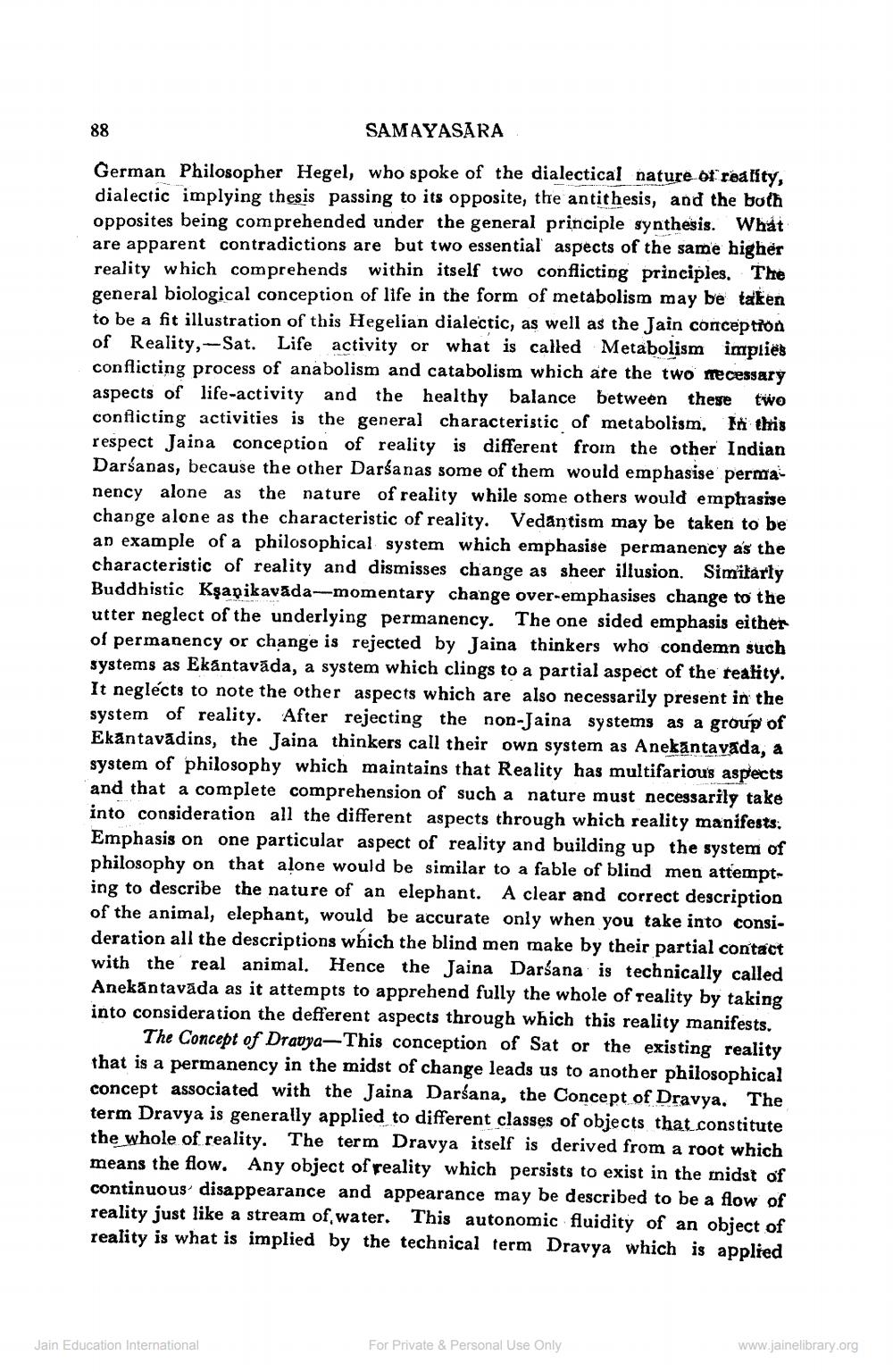________________
SAMAYASARA
German Philosopher Hegel, who spoke of the dialectical nature of reality, dialectic implying thesis passing to its opposite, the antithesis, and the both opposites being comprehended under the general principle synthesis. What are apparent contradictions are but two essential aspects of the same higher reality which comprehends within itself two conflicting principles. The general biological conception of life in the form of metabolism may be taken to be a fit illustration of this Hegelian dialectic, as well as the Jain conception of Reality, -Sat. Life activity or what is called Metabolism implies conflicting process of anabolism and catabolism which are the two mecessary aspects of life-activity and the healthy balance between these two conflicting activities is the general characteristic of metabolism. In this respect Jaina conception of reality is different from the other Indian Darśanas, because the other Darśanas some of them would emphasise perma nency alone as the nature of reality while some others would emphasise change alone as the characteristic of reality. Vedantism may be taken to be an example of a philosophical system which emphasise permanency as the characteristic of reality and dismisses change as sheer illusion. Similarly Buddhistic Kşapikavāda-momentary change over-emphasises change to the utter neglect of the underlying permanency. The one sided emphasis either of permanency or change is rejected by Jaina thinkers who condemn such systems as Ekantaväda, a system which clings to a partial aspect of the reality. It neglects to note the other aspects which are also necessarily present in the system of reality. After rejecting the non-Jaina systems as a group of Ekantavadins, the Jaina thinkers call their own system as Anekantavada, a system of philosophy which maintains that Reality has multifarious aspects and that a complete comprehension of such a nature must necessarily take into consideration all the different aspects through which reality manifests. Emphasis on one particular aspect of reality and building up the system of philosophy on that alone would be similar to a fable of blind men attempting to describe the nature of an elephant. A clear and correct description of the animal, elephant, would be accurate only when you take into consideration all the descriptions which the blind men make by their partial contact with the real animal. Hence the Jaina Darśana is technically called Anekantavāda as it attempts to apprehend fully the whole of reality by taking into consideration the defferent aspects through which this reality manifests. The Concept of Dravya-This conception of Sat or the existing reality that is a permanency in the midst of change leads us to another philosophical concept associated with the Jaina Darśana, the Concept of Dravya. The term Dravya is generally applied to different classes of objects that constitute the whole of reality. The term Dravya itself is derived from a root which means the flow. Any object of reality which persists to exist in the midst of continuous disappearance and appearance may be described to be a flow of reality just like a stream of water. This autonomic fluidity of an object of reality is what is implied by the technical term Dravya which is applied
88
Jain Education International
For Private & Personal Use Only
www.jainelibrary.org




